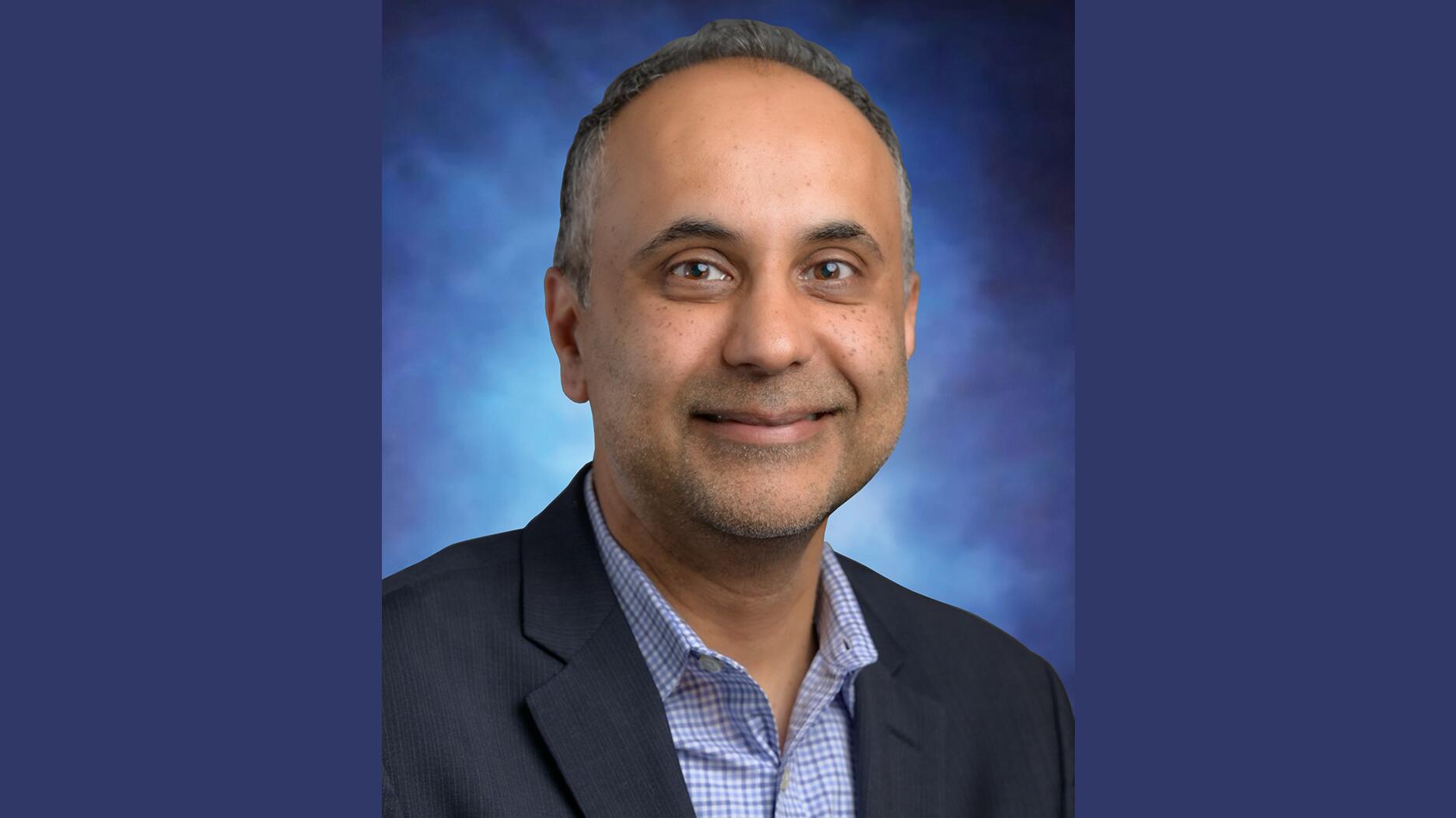Executive Chairman Richard Baker will take over the role as rumors swirl that a bankruptcy filing is imminent for the troubled retailer.
Q&A: New GJEPC Chairman Kirit Bhansali
Bhansali discusses the potential impact of U.S. tariffs, demand for diamonds by market, and the “cautious confidence” in India right now.

Among those expressing this confidence is Kirit Bhansali.
Newly elected as chairman of India’s Gem & Jewellery Export Promotion Council (GJEPC), Bhansali said as the first quarter of 2025 draws to a close, there is a sense of “cautious confidence” in the trade despite all the uncertainty in the world.
In a recent interview with Indian journalist Stephen Rego, he also discussed the state of demand for diamond jewelry in major markets worldwide and how U.S. tariffs could impact the jewelry industry.
This interview has been edited for length and clarity.
Stephen Rego: India’s overall exports for the first 10 months of fiscal year 2025 have declined by about 7 percent, with polished diamonds dipping by 18 percent.
What were the reasons for this, and where does the industry go from here?
Kirit Bhansali: In 2023 and 2024, the industry faced multiple challenges, many on account of broader geopolitical issues.
Demand was slow in the United States, where lab-grown diamonds additionally took market share from natural diamonds in some segments. China has been in a slump and not shown any significant signs of recovery.
The impact was greater in mid-size goods between 30 cents to 1 carat, where the rise of lab-grown diamonds and the decline of Chinese demand were felt most strongly. Demand for smaller sizes remained less affected.
However, thanks to coordinated efforts from stakeholders across the pipeline, we are seeing some recovery now.
Inventories in the midstream have reduced and U.S. demand appears to be picking up.
There are some very early indications that the Chinese market may have bottomed out.
We are in the final weeks of Q1 2025, and there is a sense of cautious confidence, though geopolitical uncertainties are casting a shadow.
SR: What steps will GJEPC take to ensure a balance between supply and demand?
KB: GJEPC believes that self-regulation remains the key to balancing supply and demand while ensuring stable flow of rough to cutting factories.
We have a Diamond Panel Committee that meets regularly. It assesses the situation in close collaboration with the industry, seeking inputs and offering timely guidance on market conditions.
GJEPC has not issued any formal guidelines; however, we believe that members will make cautious and informed decisions in managing their inventory.
New tax regulations governing the sale of rough by foreign companies in Special Notified Zones in Mumbai and Surat set up for this purpose were announced recently. GJEPC is in talks with miners to avail of these benefits through direct sales in India.
SR: Gem-set and plain gold jewelry exports have been a bright spot. What are the main factors driving this?
KB: Over the last year, we have seen some growth in demand for gem-set gold jewelry from the U.S. market, though the shadow of the slowdown has not disappeared. Meanwhile, demand from other regions has been promising.
The CEPA (Comprehensive Economic Partnership Agreement) trade agreement between India and the United Arab Emirates has played a pivotal role in boosting the jewelry sector.
Gem and jewelry exports to the region have surged by over 60 percent, from $4.95 billion in fiscal year 2022 to $8.04 billion in fiscal year 2024.
While the Middle East has always been an important market for plain gold jewelry, during 2024 there was a marked rise in demand for jewelry studded with diamonds and precious gemstones also.
The setting up of Bharat Ratnam, a center in the Special Economic Zone in Mumbai that offers manufacturers shared access to advanced jewelry manufacturing technology on par with the latest in the world, has also boosted the sector.
SR: How do you see the markets shaping up in 2025?
KB: U.S. demand seems to be improving, and whatever growth takes place in China will be a bonus.
The Middle East holds promise, while there is good potential in some new emerging markets that GJEPC has been exploring, like Vietnam, Cambodia, and Latin America.
India has been a bright spot for natural diamonds and is emerging as a significant consuming market.
SR: What role will GJEPC play in the industry’s push to boost diamond demand?
KB: GJEPC has been actively collaborating with key global stakeholders like the Natural Diamond Council and others to drive demand for diamond jewelry worldwide.
In China, GJEPC has entered into a strategic collaboration with De Beers and Chow Tai Fook to launch a campaign to strengthen consumer confidence in diamonds by addressing key issues. It has commenced recently, so we may see some impact in the latter part of the year.
In India, GJEPC joined hands with De Beers to launch INDRA (the Indian Natural Diamond Retailer Alliance), a business-to-business platform designed to support jewelry retailers and boost diamond jewelry sales in India.
Furthermore, GJEPC is working closely with global miners and key industry stakeholders to launch a high-impact diamond jewelry campaign to drive long-term growth.
SR: Tell us about some key plans and projects for the jewelry sector.
KB: We are working to develop the India Jewellery Park, Mumbai, a 21-acre world-class facility dedicated to modern jewelry manufacturing.
It will have state-of-the-art infrastructure, a skilled workforce, and an end-to-end manufacturing ecosystem. The first units in this new project may be ready by the end of 2026.
Additionally, GJEPC is accelerating the Gem Bourse project in Jaipur to boost the gemstone trade.
Further, 17 key jewelry clusters across the country have been identified based on their size, potential, and strategic location. We aim to develop them into thriving export hubs.
SR: What are the targets you have set for fiscal year 2026 and what will be the key focus areas to drive growth in gem and jewelry exports?
KB: We are optimistic about the outlook for fiscal year 2026 and expect gem and jewelry exports to revive to $32 billion (currently at $23 billion between April 2024 and January 2025).
SR: There is a likelihood that tariffs for jewelry imports into the U.S. will increase. How do you view this new challenge?
KB: The possibility of higher tariffs on jewelry imports into the U.S. could significantly impact our industry.
We are urging the Indian government to proactively pursue a preferential trade agreement to protect the interests of exporters. We have emphasized the need to sustain our trade relationship with the U.S., which accounted for $9.45 billion of India’s gem and jewelry exports in fiscal year 2024.
We are confident that the government will consider all factors and develop a framework so no industry will be hit too badly.
Also, an industry team led by GJEPC, will be visiting the U.S. shortly to discuss future plans with key clients and trade bodies.
The aim will be to find ways to mutually ensure that trade in the sector continues smoothly.
The Latest

Mohr had just retired in June after more than two decades as Couture’s retailer liaison.

This year’s good luck charm features the mythical horse Pegasus, and is our first Piece of the Week of the new year.

How Jewelers of America’s 20 Under 40 are leading to ensure a brighter future for the jewelry industry.

Articles about crime, engagement rings, and a necklace worn in the World Series generated the most interest among readers.


As part of the leadership transition, Sherry Smith will take on the role of vice president of coaching strategy and development.

The new Bulova x Stetson designs highlight two animals often associated with the American West—the bison and the Texas Longhorn.

Roseco’s 704-page catalog showcases new lab-grown diamonds, findings, tools & more—available in print or interactive digital editions.

Its residency at Yamron Jewelers will run through May 2026.

From influential executives to innovative designers, we pay tribute to the people we said goodbye to this year.

The retailer is expanding into areas with large Indian and South Asian populations.

The Italian brand has opened its first flagship amid the peaks of the Dolomites in Madonna di Campiglio, Italy.

The new curation at the Natural History Museum of Los Angeles County showcases rare gem and mineral specimens in their uncut, natural state.

The couple pleaded guilty to concealing at least $127 million in cash transactions at its precious metals businesses.

Consumers shared concerns about prices, inflation, tariffs, trade, and politics in the survey’s write-in response section.

In February 2026, the auction house will move its headquarters to the former Steinway Hall, a neoclassical landmark on Billionaires’ Row.

The new show will take place Jan. 23-25, 2026.

The former BHP Billiton leader and Gemfields chairman is remembered for his influential leadership throughout his 50-year mining career.

The LVMH-owned brand has partnered with the costume design union to revamp its award for 2026.

The luxury titan inked a deal to acquire an initial minority stake in the jewelry manufacturer with a pathway to full ownership by 2032.

The company’s curation of unsigned vintage and estate jewelry debuted at the Bloomingdale’s in Costa Mesa, California.

In the recent multi-shipment seizure, CBP also found counterfeit Audemars Piguet, Moncler, and Chrome Hearts items.

Helzberg’s Chief Retail Officer Mitch Maggart shared details about its tests of a new store concept rooted in an elevated luxury experience.

Jewelers of America execs and National Jeweler editors discuss tariffs, the sky-high gold price, and the engagement that broke the internet.

The luxury goods company said founder Ippolita Rostagno will remain at the brand’s helm.

Laura Burdese, who joined the Italian luxury brand in 2022, will take on the role in July.

The National Jeweler editors revisit the most noteworthy industry happenings and design trends from 2025.


























